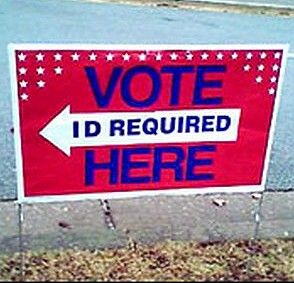NYT leaves out crucial point in puff piece on the defeat of North Dakota voter ID proponent
On Tuesday, the New York Times published a glowing piece on voter turnout in North Dakota in this month’s election. In particular, they focused on how a Democrat Native American candidate defeated the Republican state representative who was the primary sponsor of the state’s voter ID law.

The tweet itself about the defeat of the voter ID proponent was captivating, and garnered close to 4,300 retweets and over 13,000 likes as of this writing:
Galvanized by a voter ID law, Native Americans turned out in record numbers in North Dakota — and a Native American woman unseated the law's architect https://t.co/O6gZq5Jbm0
— NYT Politics (@nytpolitics) November 14, 2018
It’s a compelling story (bolded emphasis added):
But galvanized by anger over the state’s voter ID law and aided by the intensive efforts of tribal leaders and advocacy groups, they turned out for last week’s election in numbers unprecedented even for a presidential election, much less a midterm.
In Sioux County, where the Standing Rock Indian Reservation is, turnout was up 105 percent from the last midterm elections in 2014 and 17 percent from the 2016 presidential election, according to data from the North Dakota secretary of state’s office. In Rolette County, home to the Turtle Mountain Band of Chippewa Indians, it was up 62 percent from 2014 and 33 percent from 2016. In Benson County, home to the Spirit Lake Nation, it was up 52 percent from 2014 and 10 percent from 2016.
One of the most striking results of the night, though, came far from the reservations: in a normally Republican district in the Fargo area, where Ruth Buffalo became the first Native American Democratic woman elected to the North Dakota Legislature. She did it by unseating State Representative Randy Boehning, the primary sponsor of the very voter ID law Native Americans had feared would disenfranchise them.
But how could this be? We were told just last month that:
The Supreme Court declined this month to overturn a North Dakota law that requires voters to present an ID listing their residential address at the polls.
The decision could have a negative impact on tens of thousands of rural voters — many of them Native Americans who live on one of the states five reservations, where residents are not required to have a street address.
And before that:
Tens of thousands of North Dakotans, including Native and non-Native residents, do not have residential addresses on their IDs and will now find it harder to vote.
And from the New York Times just a few weeks ago:
Native Americans are about 5 percent of North Dakota’s 750,000 residents, and according to the Native American Rights Fund, they’re more than twice as likely as other voters to lack a form of identification acceptable under the new law. The district court that ruled earlier this year found that about 5,000 Native American voters did not have the necessary identification, and that about 2,300 of that number also lacked supplemental documentation.
In 2012, Ms. Heitkamp won by fewer than 3,000 votes.
How did we get here?
Republicans in North Dakota have been trying to make this change since 2013. In fact, the state legislature began debating a voter ID law within months of Ms. Heitkamp’s victory. Democrats say the change is a politically motivated attempt to suppress the Native American vote.
Except it didn’t “suppress the Native American vote”, just like voter ID has not suppressed the black vote in states like Georgia and here in North Carolina for the brief period of time we had voter ID (in spite of the usual scare tactics attempted by the activist left).
In fact, even though we don’t have voter ID in NC anymore, voters last week approved for a voter ID amendment to be added to the state constitution. Voter turnout was 8% higher here for this midterm election than it was in 2014.
Voter ID was in effect at the time of the election this year in North Dakota. Voter ID did not keep Native American voters from coming out to vote in record numbers. Voter ID did not “suppress” the Native American vote. The midterm turnout numbers for North Dakota, in fact, were “unprecedented” by the New York Times‘ own admission.
And in states where Democrats have campaigned that voter ID will “suppress” the turnout, like North Carolina, voters have turned out in high numbers and soundly approved for it to be enshrined into the state constitution.
The only “suppressing” being done here is by the left-leaning political press and their compadres on the activist left who are suppressing the truth about voter ID.
It’s time for Democrats to stop lying to the American people about the “negative” impacts from common sense voter ID legislation. It’s also long past time for their allies in the mainstream media to admit when they’ve gotten it all wrong – especially when writing pieces about “unprecedented turnout” and candidates who defeat proponents of voter ID in states where the law has already taken effect. Hello?
